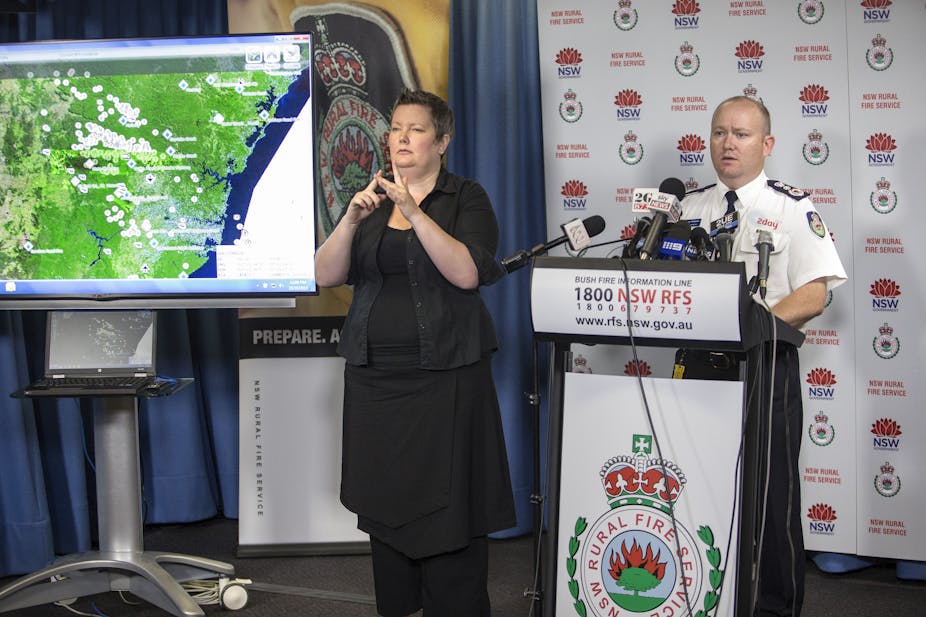It’s alarmingly familiar. Scenes of bushland burning on the fringes of an Australian city. The roofs of threatened homes just visible through the forest canopy and the smoke. Fire-fighters beyond exhaustion.
On seeing these images, it is reasonable to ask why people choose to live in places of such volatile bushfire risk. Are they not aware of the danger? Are they adequately prepared or do they choose to ignore it?
People choose to live in the urban-bushland fringes of cities for many reasons, even when they know on some level that these landscapes will sooner or later burn. Living with the possibility of bushfire is a trade-off for the everyday benefits of appreciating scenic beauty or being close to nature. It can also be for the sense of space and privacy or simply being away from the city.
It would be more useful to ask why these residents’ assessments of risk appear to be so different from those made by the fire agencies. How does this affect the way the fire safety messages are understood and acted on?
Risk is a concept that can be understood in different ways depending on who is doing the assessment. For example, scientists or other experts within fire agencies aim to quantify risk and decrease uncertainty.
They assess risk using scientific-technical analyses of hazards and probability of harm. Even experts can disagree about risk management, as is demonstrated by the the debate about results of prescribed burning.
On the other hand, community understanding of bushfire risk is likely to involve social dimensions. People consider their family or caring responsibilities. Individual or collective memory of past bushfires and shared local narratives about bushfire behaviour are also important.
Local understandings of the physical aspects of the landscape play a big part. For example, a major consideration for many people is the direction and speed of wind. Even the sound of wind in the trees can be a “cue” to understanding fire weather.
The key difference between the “expert” and “local” ways of knowing risk is that the scientific-technical approach specifically sets out to exclude local variations. This is to provide consistency and uniformity across all locations and landscape types.
The problem is that local factors are the most meaningful to people. So, when residents appear to not change behaviour in response to expert risk messages, it does not follow that the message hasn’t been understood. Instead it may mean that the official message doesn’t match other cues they have taken from the landscape.
An example of how people balance environmental cues with official messages is the use of Fire Danger Ratings. These are a coarse measure of risk applied across different landscape and vegetation types within a region.
Results of research into one Wimmera community’s response to a “Code Red: Catastrophic” day in 2010 was that the rating did not match local knowledge of bushfire weather conditions. Residents were aware of the rating on the day. But most based their preparations or decisions to stay or go on a more nuanced understanding of bushfire and weather conditions in their local landscape.
A report recently prepared for the Victorian Fire Services Commissioner into community responses to the Chepstowe, Aberfeldy and Donnybrook Road fires also makes the point that that information provided by fire agencies tends to be generic.
Many people already have a general understanding of how they will respond to bushfire. Therefore there is little incentive to take the time to seek out additional, generic information that will add nothing to the quality of their decisions.
Research also suggests that people are more likely to implement fire prevention measures when information comes through local channels, such as volunteer fire departments or conversations with neighbours.
This is not to argue that local knowledge must therefore be valourised above scientific or expert risk analyses. What is required is an approach to risk assessment that embraces the best possible science.
But it must also recognise how local knowledge of bushfire risk is a result of social processes, as well as interactions with the local environment. This will require communities and agencies working closely together at all stages of the planning process, not just involving communities at the implementation phase.
There is a danger that the policy of “shared responsibility” for emergency management will be interpreted as a division of roles between government, agencies and communities rather than as a way of working together to develop common language and meaning of bushfire risk.
Rather than trying to exclude local knowledge and variability, some agencies have already implemented community-led approaches to planning. Much can be learnt from these about working with communities to create shared meanings - a co-construction of risk. This could lead to shared approaches to preparing for and managing risks in diverse Australian landscapes.

